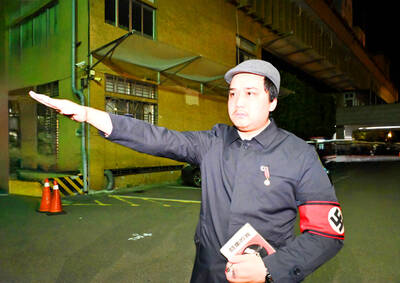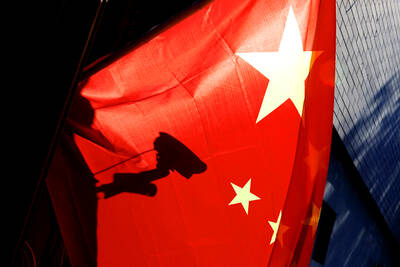The Kaohsiung City government has successfully turned decaying garbage in a closed landfill into a valuable source of alternative energy, with the largest methane power plant (
Four generators at the plant built at the municipal Hsichingpu (
As a landfill gas, methane is a productive fuel source that can be used to generate electricity rather than being allowed to escape into the atmosphere to contribute to global concentrations of greenhouse gases.
City officials' expectations are high for the plant because the landfill -- containing almost nine million tons of garbage -- should be able to produce fuel the plant for at least 20 years.
"Transforming hazardous landfill gases into useable fuel will create electricity as well as help solve our air pollution problems," said Chang Feng-teng (
The plant was designed by Cleanaway (
Cleanaway, under a 20-year contract with the Kaohsiung City government, will build three more generators in a bid to raise its total power capacity to 9500 kilowatts, supplying nearly 14,000 families every day in the future.
Since the landfill began operations in 1977, residents near the dump have complained of the terrible stench from what they claim have been improper methods of dealing with the waste, such as openly burning the refuse.
It was not until 1986 that city environmental officials began to treat the contaminated water that was seaping away from the dump. Prior to that time, the landfill was not properly insulated from the underlying soil and no provisions were made for collecting the methane gas that was escaping.
In the 1990s, the 48-hectare landfill became part of Kaohsiung's legacy of poor public management. The result was that in 1994 and 1995, several violent demonstrations were staged which created tension between local residents and the city government headed by Mayor Wu Tun-yi (吳敦義). At the time, Wu said that the landfill was nearly full and would be impossible to relocate.
Residents demanded that the former head of the environmental bureau, Wu Ming-yang (
When the landfill was finally closed in June 1999, the city government commissioned a study to turn the area in to a park.
In addition, a methane-fueled power plant was one of essential parts of the project.
Environmental official Chang said that the once putrid Hsichingpu Landfill would eventually be transformed into the "lungs of Kaohsiung," providing fresh air and an abundant supply of electricity.
The methane plant in Kaohsiung is the second in Taiwan. The Taipei City government built the first one last November at its Shanchuku Landfill (
It is also being operated by Cleanaway.

SECURITY: As China is ‘reshaping’ Hong Kong’s population, Taiwan must raise the eligibility threshold for applications from Hong Kongers, Chiu Chui-cheng said When Hong Kong and Macau citizens apply for residency in Taiwan, it would be under a new category that includes a “national security observation period,” Mainland Affairs Council (MAC) Minister Chiu Chui-cheng (邱垂正) said yesterday. President William Lai (賴清德) on March 13 announced 17 strategies to counter China’s aggression toward Taiwan, including incorporating national security considerations into the review process for residency applications from Hong Kong and Macau citizens. The situation in Hong Kong is constantly changing, Chiu said to media yesterday on the sidelines of the Taipei Technology Run hosted by the Taipei Neihu Technology Park Development Association. With

A US Marine Corps regiment equipped with Naval Strike Missiles (NSM) is set to participate in the upcoming Balikatan 25 exercise in the Luzon Strait, marking the system’s first-ever deployment in the Philippines. US and Philippine officials have separately confirmed that the Navy Marine Expeditionary Ship Interdiction System (NMESIS) — the mobile launch platform for the Naval Strike Missile — would take part in the joint exercise. The missiles are being deployed to “a strategic first island chain chokepoint” in the waters between Taiwan proper and the Philippines, US-based Naval News reported. “The Luzon Strait and Bashi Channel represent a critical access

‘FORM OF PROTEST’: The German Institute Taipei said it was ‘shocked’ to see Nazi symbolism used in connection with political aims as it condemned the incident Sung Chien-liang (宋建樑), who led efforts to recall Democratic Progressive Party (DPP) Legislator Lee Kun-cheng (李坤城), was released on bail of NT$80,000 yesterday amid an outcry over a Nazi armband he wore to questioning the night before. Sung arrived at the New Taipei City District Prosecutors’ Office for questioning in a recall petition forgery case on Tuesday night wearing a red armband bearing a swastika, carrying a copy of Adolf Hitler’s Mein Kampf and giving a Nazi salute. Sung left the building at 1:15am without the armband and apparently covering the book with a coat. This is a serious international scandal and Chinese

COUNTERINTELLIGENCE TRAINING: The ministry said 87.5 percent of the apprehended Chinese agents were reported by service members they tried to lure into becoming spies Taiwanese organized crime, illegal money lenders, temples and civic groups are complicit in Beijing’s infiltration of the armed forces, the Ministry of National Defense (MND) said in a report yesterday. Retired service members who had been turned to Beijing’s cause mainly relied on those channels to infiltrate the Taiwanese military, according to the report to be submitted to lawmakers ahead of tomorrow’s hearing on Chinese espionage in the military. Chinese intelligence typically used blackmail, Internet-based communications, bribery or debts to loan sharks to leverage active service personnel to do its bidding, it said. China’s main goals are to collect intelligence, and develop a